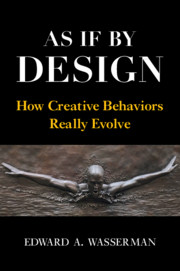Previewing the Vignettes
from Section 1 - Introduction
Published online by Cambridge University Press: 01 July 2021
Summary
Over the past fifteen years, I’ve been collecting vignettes that interestingly illuminate the nature of behavioral innovation. As a psychological scientist concerned with how both humans and animals adjust to the frequently changing demands of survival, it is perfectly clear that the most creative of those behaviors have posed the greatest challenge to existing theories of learning and behavior.
- Type
- Chapter
- Information
- As If By DesignHow Creative Behaviors Really Evolve, pp. 13 - 16Publisher: Cambridge University PressPrint publication year: 2021



